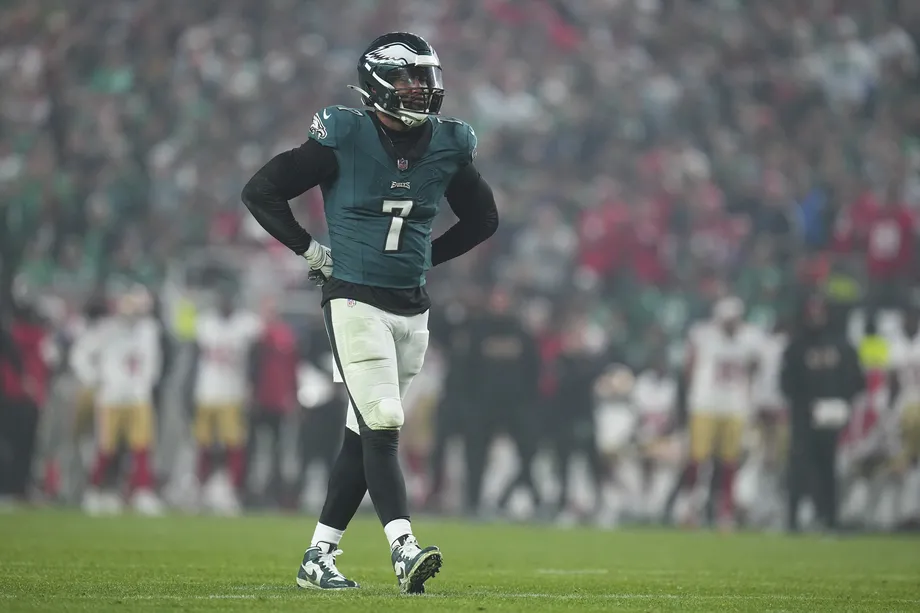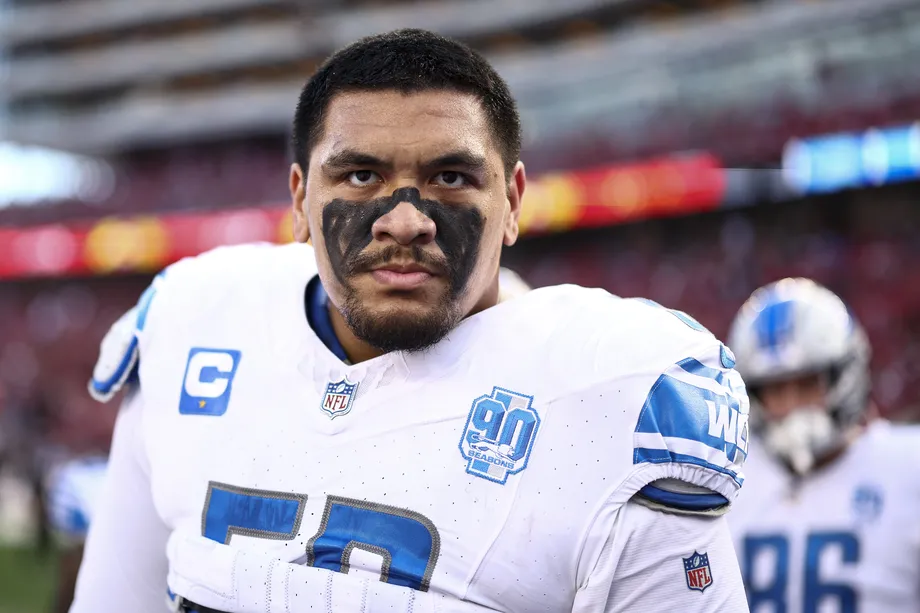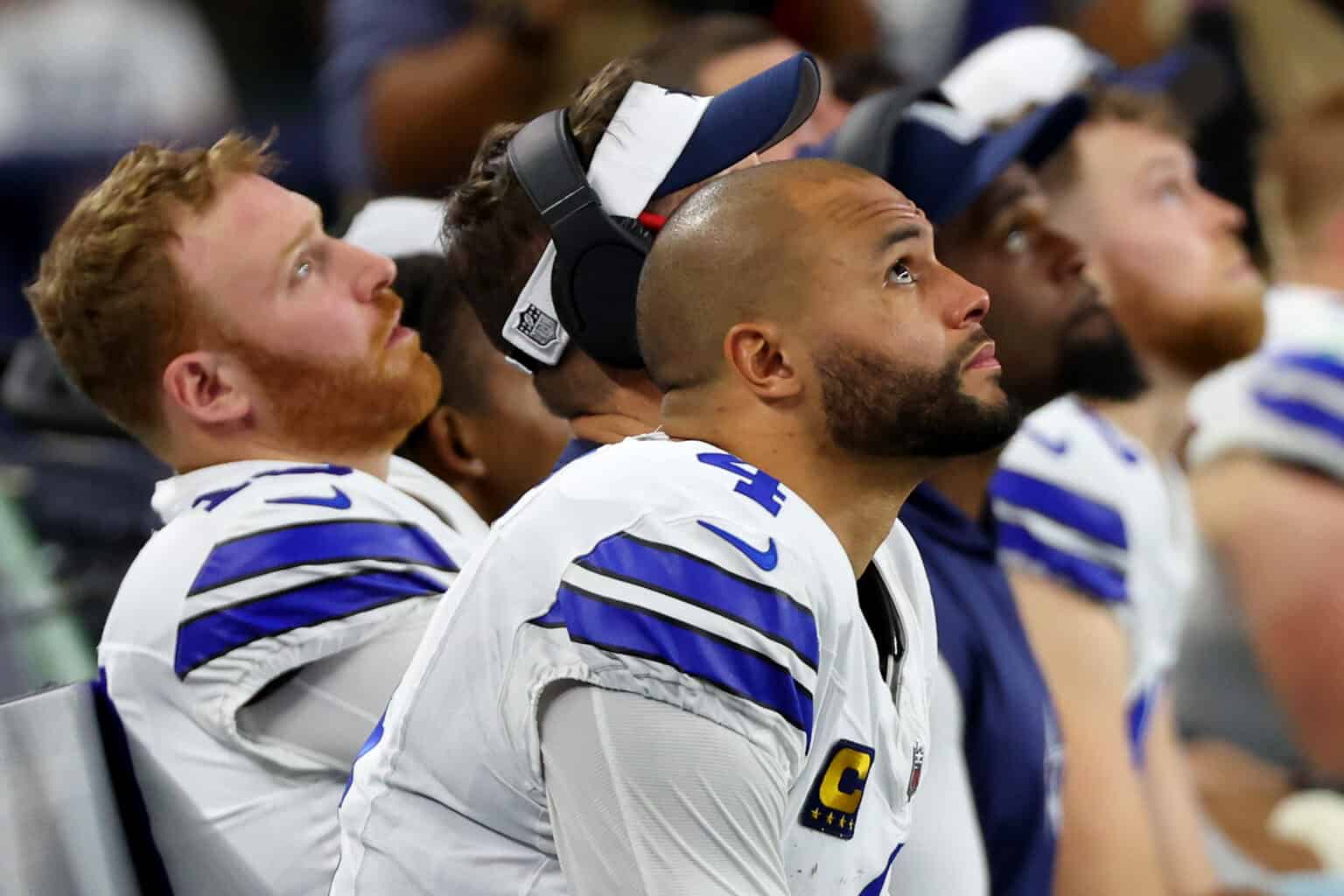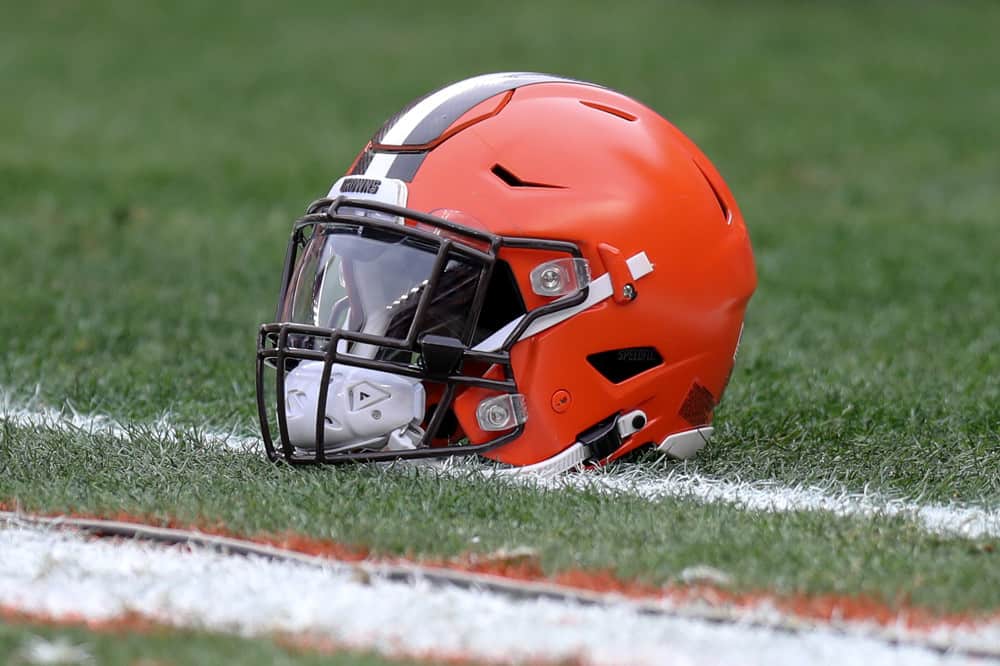Dak Prescott’s $55.5 million salary cap hit is a key issue for the Dallas Cowboys’ offseason. It’s among the reasons they’ve been quiet so far in free agency, having the least amount of cap space among all NFL teams. They could open up salary cap from other restructures, but so far they have eschewed that option. How did we get here, and what hope can we reasonably have for the future?
This is the final year of the four-year, $160 million extension Prescott signed following the 2020 season. The current cap hit has swelled due to past restructuring; converting base salary into signing bonus money and creating more cap space while increasing the cap hits in future years. Remember all those times that you heard Dallas was “robbing Peter to pay Paul?” Well, Peter’s found us and he’s looking for revenge.
/cdn.vox-cdn.com/uploads/chorus_image/image/73225415/usa_today_22079576.0.jpg)
You’ve probably also heard about “void years” on Prescott’s contract. That came up just recently as the QB and the team worked out an agreement to create $4 million in cap space by adding void years to the current deal. Void years are an accounting mechanism that pushes dead money beyond the actual endpoint of the contract. To borrow another common idiom, if you’re kicking the can down the road, void years are a way of extending the road.
Even with void years now in place through 2028 on his contract, Prescott still becomes an unrestricted free agent in 2025. The Cowboys’ logic has been that they’d be in business with Prescott for the long haul, and a new contract extension would absorb those future cap concerns and give them more ability to massage and manage things. If the NFL’s salary cap keeps going up like it did this year, that becomes progressively easier.
But what if a deal is not struck for an extension and Prescott actually signs elsewhere next year? The void years mean he’d still count about $40 million in dead money against the 2025 salary cap despite the contract expiring. It would accelerate all the pushed-out money into that offseason the same as when a player gets released in the middle of a contract. The void years from 2026-2028 wouldn’t be there anymore, but it would mean an astronomical amount of cap space tied up in a guy who’s playing for another team.
Obviously, that would be far from ideal. But there’s a rising thought that Dallas may actually be considering this option. It’s based on two key things, their trade for QB Trey Lance last year and their current approach to free agency. Could these suggest that the Cowboys are preparing for a future without Dak Prescott?
The Lance trade was very out of character for this team, especially with Cooper Rush already signed through 2024 as an established, trusted backup. While trading a fourth-round pick to San Francisco was not a huge investment, Dallas knew that Lance’s 2024 cap hit would rise to $5.3 million and he’d also become a free agent in 2025 like Prescott. He’s not really a leverage piece at all for them in negotiations with Prescott, especially after not even taking a snap last season.
So what was the point? Well, given where Lance’s career is at this point, they can probably work out an extension with him for a pittance of what NFL quarterbacks make. If Baker Mayfield only cost Tampa Bay a little under $7 million in 2023, and that was with incentives, what can an unproven guy like Lance reasonably expect? And if the chance to resurrect his career as the starting quarterback for the Dallas Cowboys was the big carrot in the negotiation, could Lance turn down that opportunity and spotlight?
If that’s the play, it significantly helps Dallas handle the dead money from Prescott leaving. Even with the $40 million gone, their actual starting quarterback may not count much more than $5-$10 million. Add those together and your 2025 total overhead for QB1 is still about $45-$50 million, which is consistent with where several other teams will be. And in 2026, depending on how things go with Lance, you could be flush with space when the $40 million from Prescott’s dead money evaporates.
Dallas’ inactivity so far this offseason is another indication that this may be happening, or at least an option they’re considering. Avoiding high free agent costs and focusing on the draft to refill the roster is a future-minded strategy. They’ll likely add some more bargain free agents as we get into the later waves, and especially when desperate veterans are still looking for work following the draft or after June-1st cuts. But Dallas allowing so many of their own guys to leave, and not yet doing anything to replace them, looks more like a team hitting the reset button than being truly committed to competing in 2024.
That diminished resolve toward next season makes sense if you’re not really invested in your current head coach or starting quarterback, or maybe both. With Mike McCarthy and Dak Prescott entering the final years of their contracts, the Cowboys may already be thinking ahead and content to let them just run the show for one more year while the organization starts pivoting toward a new era. It will probably make for an ugly 2024, but it’s the cost of breaking the cycle.
Dak Prescott’s contract, like those of most high-level quarterbacks, provides insight into a team’s overall strategy. If the Cowboys were truly committed to winning right now, they’d have probably already worked out an extension and opened up cap space for 2024 business. While it takes two to tango, Prescott certainly doesn’t want to watch things crumble around him. Where we are at today may indicate that this is a turning point for Prescott and the organization, and that their relationship may be ending sooner than we ever would have expected.





